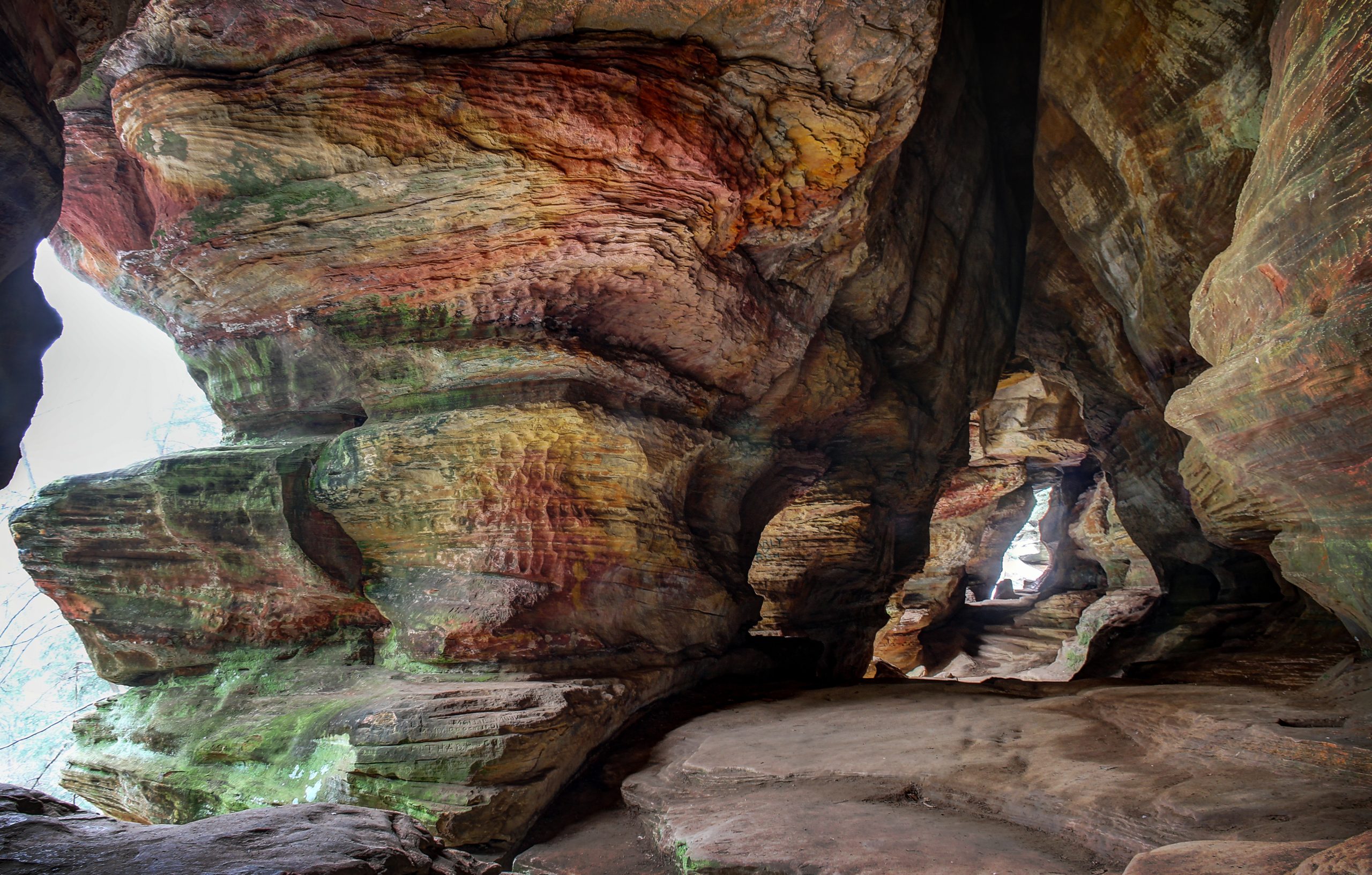Hocking Hills State Park, located in southeastern Ohio, has a rich history that spans thousands of years. The park’s unique landscape and natural rock formations were shaped by a combination of tectonic plate movement, weathering, and natural erosion over millions of years.
First Human Presence in the Region

The first human presence in the Hocking Hills region is difficult to pinpoint, but evidence suggests that it may have been as long as 7,000 years ago. The Adena culture (moundbuilders) lived in Ohio from about 1 A.D. to 800 A.D., followed by the Fort Ancient Indians from the 1300s to the 1600s. These Native American tribes left evidence of using the rock overhangs and recesses for shelter.
European Settlement

Permanent settlement by pioneers did not occur in this area until the late 1790s. The Northwest Ordinance of 1787 and the Treaty of Greenville in 1795 cleared the way for settlement. The first settlers found an abundance of game for food and natural resources, which encouraged settlement. Hocking County was organized in 1818 and by 1820 had more than 2,000 residents.
Park Establishment
The state purchased its first parcel of land in Hocking Hills in 1924, which encompassed Old Man’s Cave. Additional acreage was purchased through the 1920s, and many improvements were made in the 1930s by the Works Progress Administration (WPA). Trails, stone steps, bridges, roads, and tunnels were constructed, and extensive reforestation of timbered lands returned the surrounding area to its original primeval character.
Modern Development
In 1949, the Department of Natural Resources and the Division of Parks were formed, and Hocking Hills State Park was officially established. The park has continued to expand and develop, with the addition of facilities including cabins and a dining lodge in 1972. Today, the park consists of six separate areas encompassing 2,000 acres, offering various recreational activities such as hiking, camping, picnicking, and year-round staff programs.
Key Dates
| Date | Event |
|---|---|
| 7,000 years ago | Evidence suggests the first human presence in the Hocking Hills region. |
| 1 A.D. to 800 A.D. | The Adena culture (moundbuilders) lived in Ohio. |
| 1300s to 1600s | The Fort Ancient Indians lived in the region. |
| 1790s | Permanent settlement by pioneers began. |
| 1818 | Hocking County was organized. |
| 1820 | Hocking County had more than 2,000 residents. |
| 1924 | The state purchased its first parcel of land in Hocking Hills. |
| 1930s | Improvements were made by the Works Progress Administration (WPA). |
| 1949 | The Department of Natural Resources and the Division of Parks were formed. |
| 1972 | Facilities including cabins and a dining lodge were added. |
Park Details
- Size: 2,000 acres
- Number of Areas: 6 (Old Man’s Cave, Cedar Falls, Ash Cave, Conkles Hollow, Rock House, and Cantwell Cliffs)
- Surrounding Forest: 9,238 acres of the Hocking State Forest
- Visitor Center: Located at the Old Man’s Cave parking lot, open daily from 10am to 5pm
- Camping Options: Full Hookup, Electric, Non-electric, Primitive, and Group Camp sites
- Hiking Trails: Various trails, including Ash Cave Gorge, Cantwell Cliffs, Cedar Falls, Old Man’s Cave, Rock House, and Whispering Cave Trail
- Mountain Biking Trails: Purple Trail Loop and Orange Trail Loop
- Picnicking Areas: Several picnic areas with tables, grills, and latrines
- Special Events: Year-round nature programs and events
References:
– Hocking Hills Official Website
– Ohio Department of Natural Resources
– Hocking Hills Old Man’s Cave
– Chalet in the Hills
– The Hocking Hills
